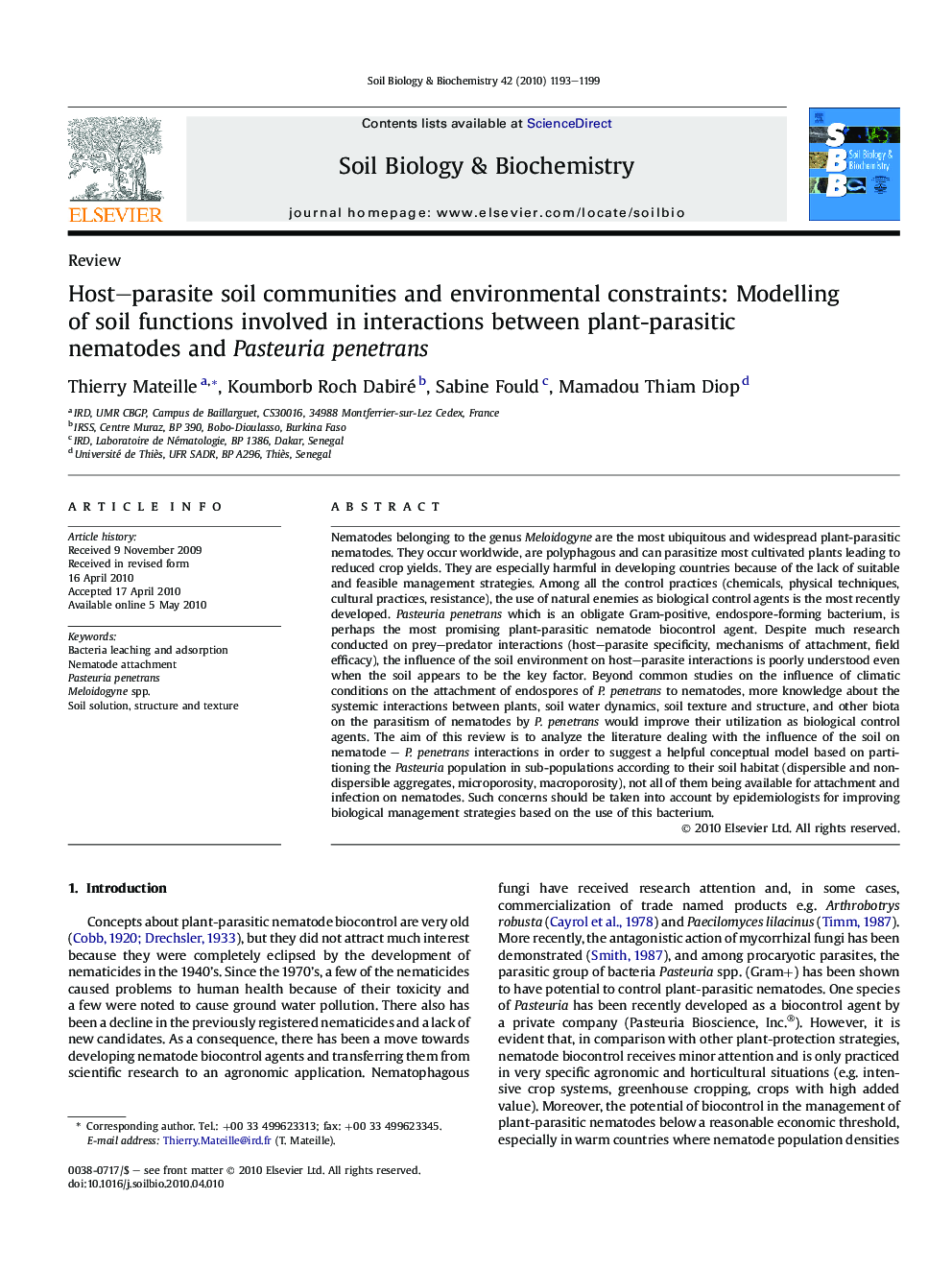| Article ID | Journal | Published Year | Pages | File Type |
|---|---|---|---|---|
| 2026088 | Soil Biology and Biochemistry | 2010 | 7 Pages |
Nematodes belonging to the genus Meloidogyne are the most ubiquitous and widespread plant-parasitic nematodes. They occur worldwide, are polyphagous and can parasitize most cultivated plants leading to reduced crop yields. They are especially harmful in developing countries because of the lack of suitable and feasible management strategies. Among all the control practices (chemicals, physical techniques, cultural practices, resistance), the use of natural enemies as biological control agents is the most recently developed. Pasteuria penetrans which is an obligate Gram-positive, endospore-forming bacterium, is perhaps the most promising plant-parasitic nematode biocontrol agent. Despite much research conducted on prey–predator interactions (host–parasite specificity, mechanisms of attachment, field efficacy), the influence of the soil environment on host–parasite interactions is poorly understood even when the soil appears to be the key factor. Beyond common studies on the influence of climatic conditions on the attachment of endospores of P. penetrans to nematodes, more knowledge about the systemic interactions between plants, soil water dynamics, soil texture and structure, and other biota on the parasitism of nematodes by P. penetrans would improve their utilization as biological control agents. The aim of this review is to analyze the literature dealing with the influence of the soil on nematode – P. penetrans interactions in order to suggest a helpful conceptual model based on partitioning the Pasteuria population in sub-populations according to their soil habitat (dispersible and non-dispersible aggregates, microporosity, macroporosity), not all of them being available for attachment and infection on nematodes. Such concerns should be taken into account by epidemiologists for improving biological management strategies based on the use of this bacterium.
